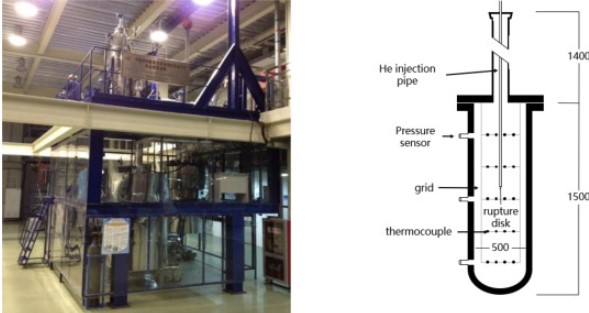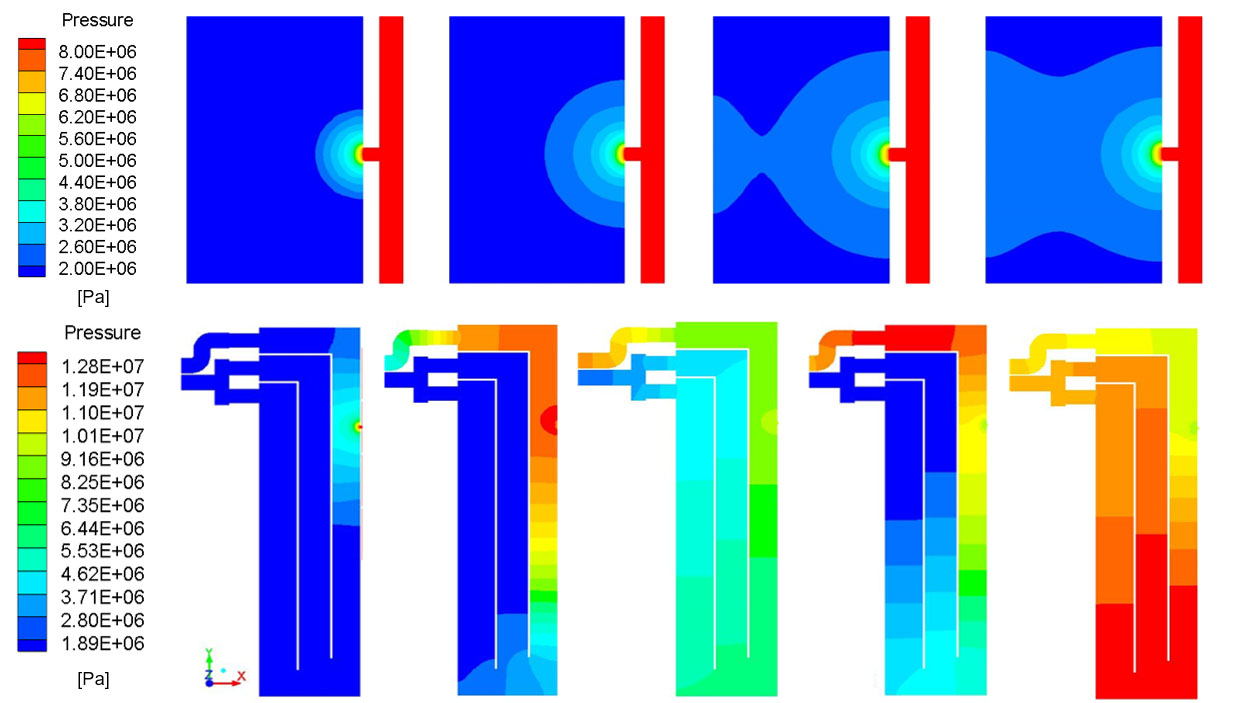
Recently, a research group led by Prof. YU Jie and CHEN Zhibin at the Institute of Nuclear Energy Safety Technology, Hefei Institute of Physical Science (HFIPS) developed a two-way coupling model for fluid-solid interaction, providing guidance for safety operation and accident mitigation measures of Helium-Cooled Lead Lithium (PbLi) Blanket.
"We investigated pressure wave behavior and its effects through experiment and numerical simulation,” said WANG Zhen, member of the team. “it’s an important progress in the safety research of fusion blankets.”
When coolant channels breaks in the breeding zone, the high-pressure helium will rapidly inject into the lead lithium flow channel in accident, causing the peak pressure to exceed the design limit and threaten the structure integrity. Therefore, it is of great significance to analyzing the condition to avoid the leakage of radioactive materials.
In this research, scientists injected the high-pressure helium gas into liquid lithium lead in order to validate the coupling model. They applied the model to the transient pressure wave propagation analysis and structural stress analysis of the Dual-Functional Lithium Lead (DFLL) blanket.
It’s proved that pressure peaks occurred when oscillations and their values were strongly dependent on the break location. The closer to the inlet/outlet, the higher the peak pressure was.
This work was supported by National Key R&D Program of China and National Natural Science Foundation of China.
Link to the paper: Pressure wave behavior and its effects on structure under In-box LOCA in a helium-cooled lead lithium blanket of hydrogen fusion reactors

Fig.1 The experimental platform KYLIN-II-S and measuring instruments (Image by WANG Zhen)

Fig.2 The pressure variation at the four monitoring points (Image by WANG Zhen)
Contact:
ZHAO Weiwei
Hefei Institutes of Physical Science (http://english.hf.cas.cn/)
Email: annyzhao@ipp.ac.cn